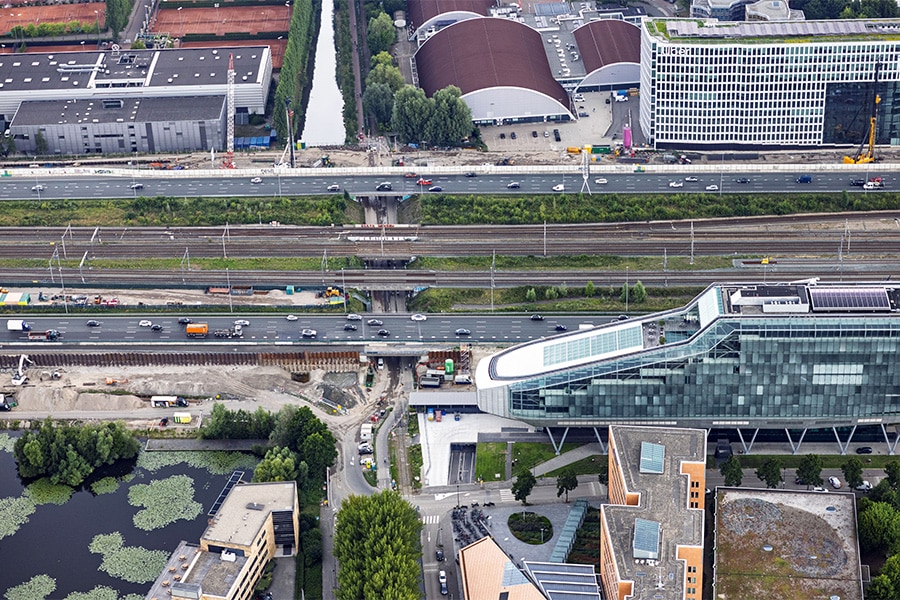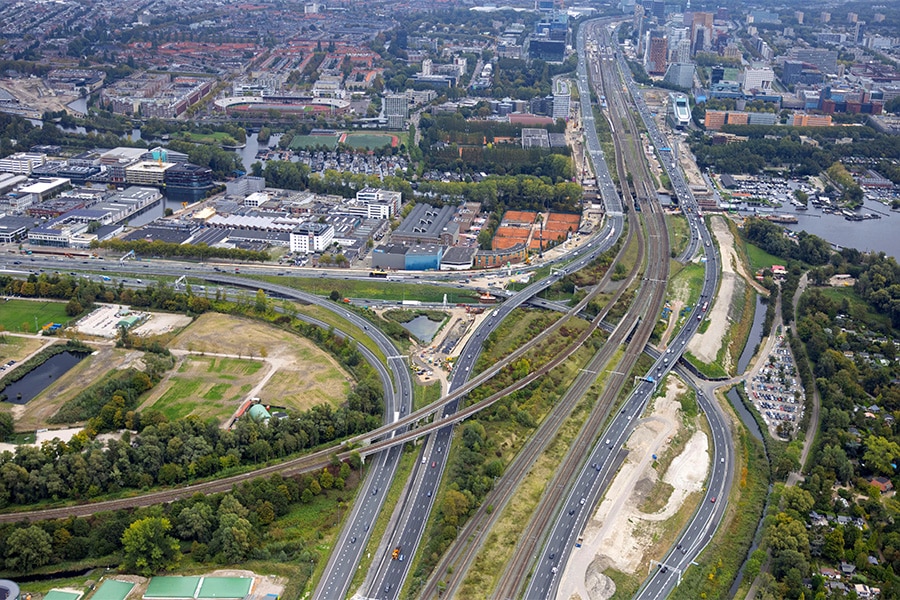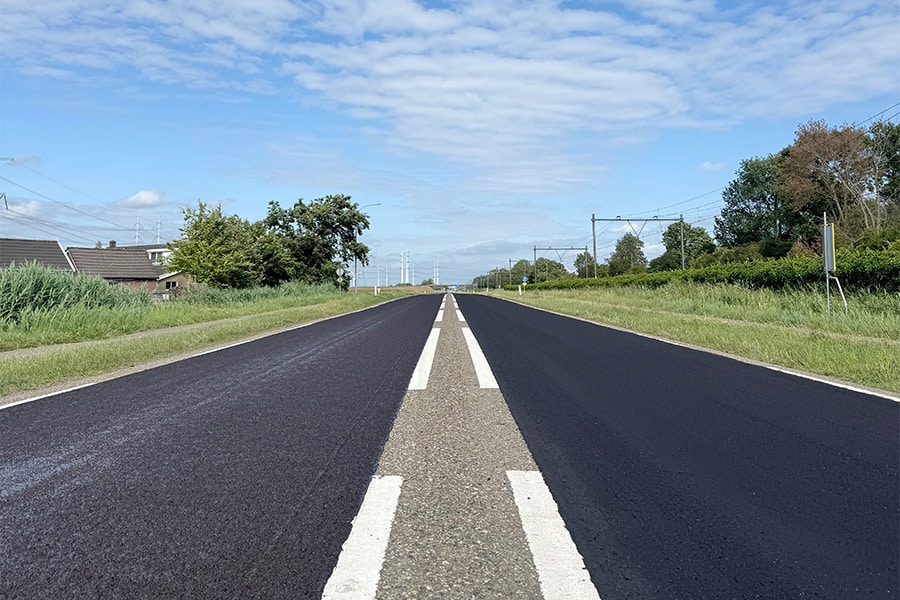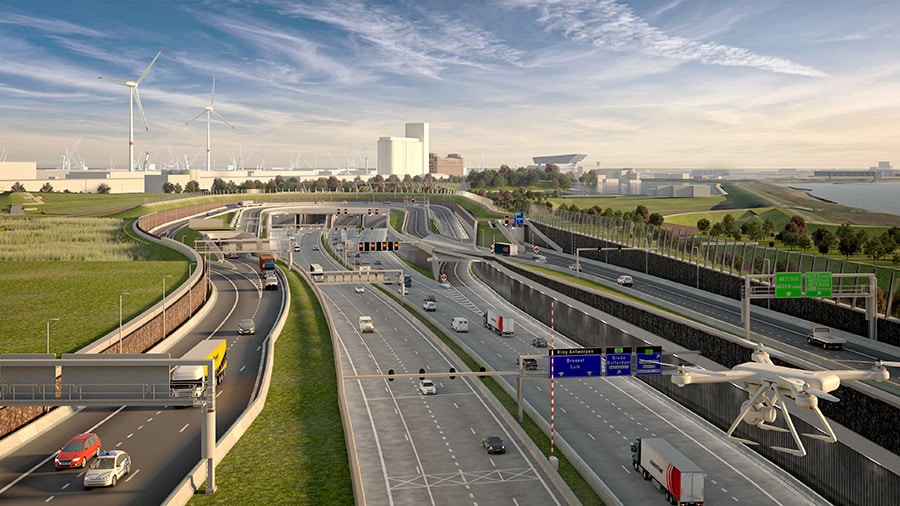
The Oosterweel connection: a crucial infrastructure project around Antwerp
The Antwerp Ring Road, officially called the R1 in Belgium, is about to close. Over the next few years, work is underway around 't Stad - as Flanders' largest city is also called - to complete the ring road. This will be done in different subprojects and different phases. Engineering firm Iv is playing a major role in the design of the Oosterweelknoop, which connects the city to the port of Antwerp and the Left Bank.
The Ring Road is one of the most important traffic junctions in Belgium. Due to the ever-increasing number of motorists, congestion around Antwerp is only increasing. The client, Lantis, wants to do something about this. The management company was set up by the Flemish government to manage this work, in addition to several other mobility projects. The Rinkoniên Rechteroever consortium is responsible for construction. The Belgian companies Artes Group, CIT Blaton and Stadsbader are working together with the Dutch construction companies Boskalis and Mobilis, providing the design and construction.
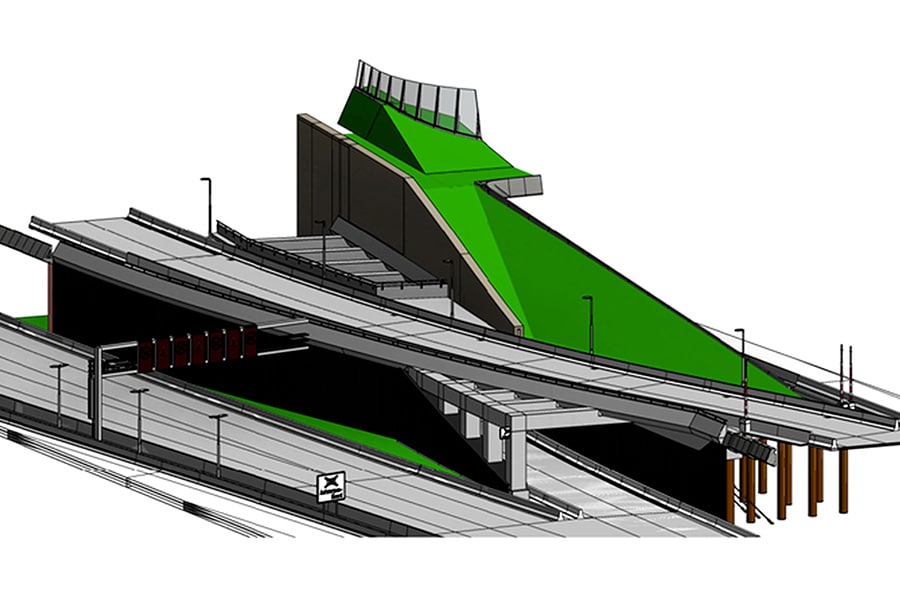
Connection to the tunnels
The Oosterweel node is a crucial part of the entire connection. It is located at the southernmost tip of the Port of Antwerp. It forms the link between the Scheldt Tunnel to be constructed on one side and the Channel Tunnels towards the city. The junction is sandwiched between the Amerikadok of the port area on the north side and the river Scheldt on the south.
The connection to both tunnels is technically and structurally special. The Oosterweelknoop is the link between the tunnel sections. The Scheldt and Channel Tunnel will be a double-deck tunnel between which the interchange must connect.

Complex puzzle with an eye for green
That location makes this project an interesting but complex puzzle. There is not much room for the complete makeover that awaits the Oosterweelknoopp zone. Currently, this is not a (through highway) interchange, but a local port access in the form of a two-lane road (the Oosterweelsteenweg, later the Scheldelaan) running along the Scheldt. It will be a dynamic interchange, sunk into the landscape, with two four-lane roads (in both directions), new slip roads to the surrounding port areas and a new public park on top of the closed part of the interchange: the Ringpark Noordkasteel.
In short: a lot is going to change on a small piece of the total project area. Of all the subprojects (The R1-North, The Scheldt Tunnel, Channel Tunnels and the Left Bank/Zwijndrecht), the Oosterweelknoop is a crucial link in "closing" the Ring Road.
Iv is working with Sweco and WSP on the design of this monster job. In a nutshell, Iv is responsible for two integral work packages involving the design of numerous concrete structures and the associated geotechnical engineering: how to build in and on the ground? In addition, Iv is also taking care of all in-fill facilities, the dressing and finishing of the interchange and, as part of asset management, the management and maintenance plan.
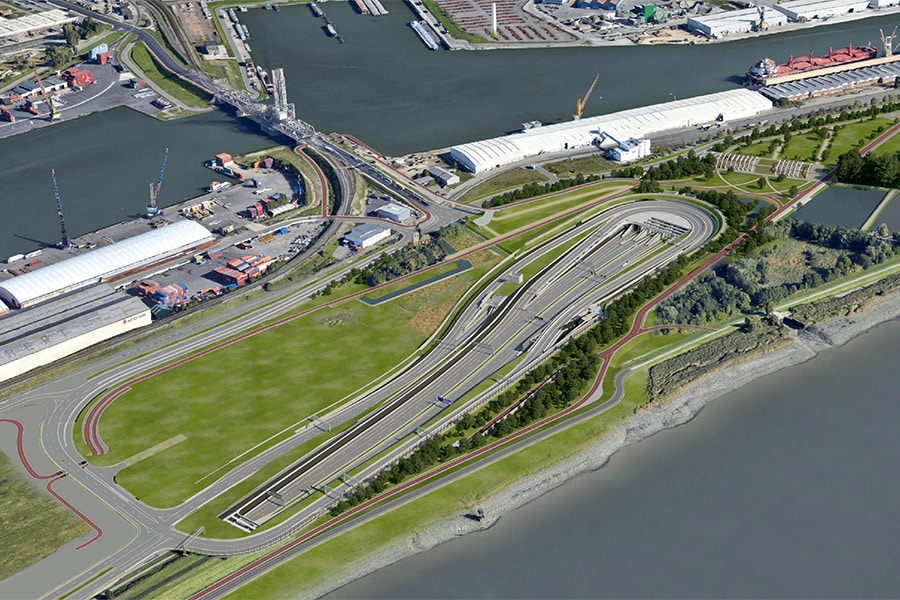
Bottle Neck
What makes the Oosterweelknoop special - besides its location - is the variety of constructions. In addition to the tunnels on both sides, flyovers will be realized and the intersections will be designed by means of a so-called pergola construction. Furthermore, there will be two bicycle tunnels and the viaduct will be designed in a paperclip shape. This piece of the Antwerp ring road is both figuratively and literally a node, comparable to the Terbregseplein (A20/A16). The big difference in design is: the Oosterweelknoop is a bottle neck and therefore more constructively challenging and, with the logistical phasing, more dynamic.
For Iv, this is truly an integrated project. Not only is the infra branch working on solutions, colleagues within construction, industry and water are also attached to the project for structural detailing and performing grounding recommendations, among other things.
The project is divided into two phases. The first phase, which is now underway, is in a construction team format. A form of cooperation that has become increasingly common in recent years. In addition to Iv as the engineering firm, it includes the client Lantis, the Rinkoniên Right Bank contractor combination and design firms Sweco and WSP. Together they work toward a final design.
Making the city breathe again
Given the location of the Oosterweel connection, the city of Antwerp also has a major role in this project, as does the Port of Antwerp. Logisitek and mobility must be considered, as well as limiting inconvenience from traffic, accessibility for cyclists and the creation of green spaces, such as the Ringpark Noordkasteel. Or, as the credo of this project is, the Oosterweel connection should make 't Stad breathe again. Thus, the additional ambition is that car traffic should be halved and cycling and public transportation should become attractive alternatives. To this end, among other things, an express bicycle route will be created, which will pass through bicycle tunnels in the Oosterweel junction.
Link between city and industry
The incorporation into the area is challenging because of the connection to two tunnels on both sides, as the interchange is largely recessed to reduce nuisance visibility and noise. This is partly at the request of the City of Antwerp. Because Total Energies' refinery is right next to the project site, it is important that cyclists are not inconvenienced by it. Therefore, the bicycle connection is largely built in a tunnel and due to the limited space with right-angled connections. And it all has to fit on a postage stamp. Within the space available, that is technically quite complex.

